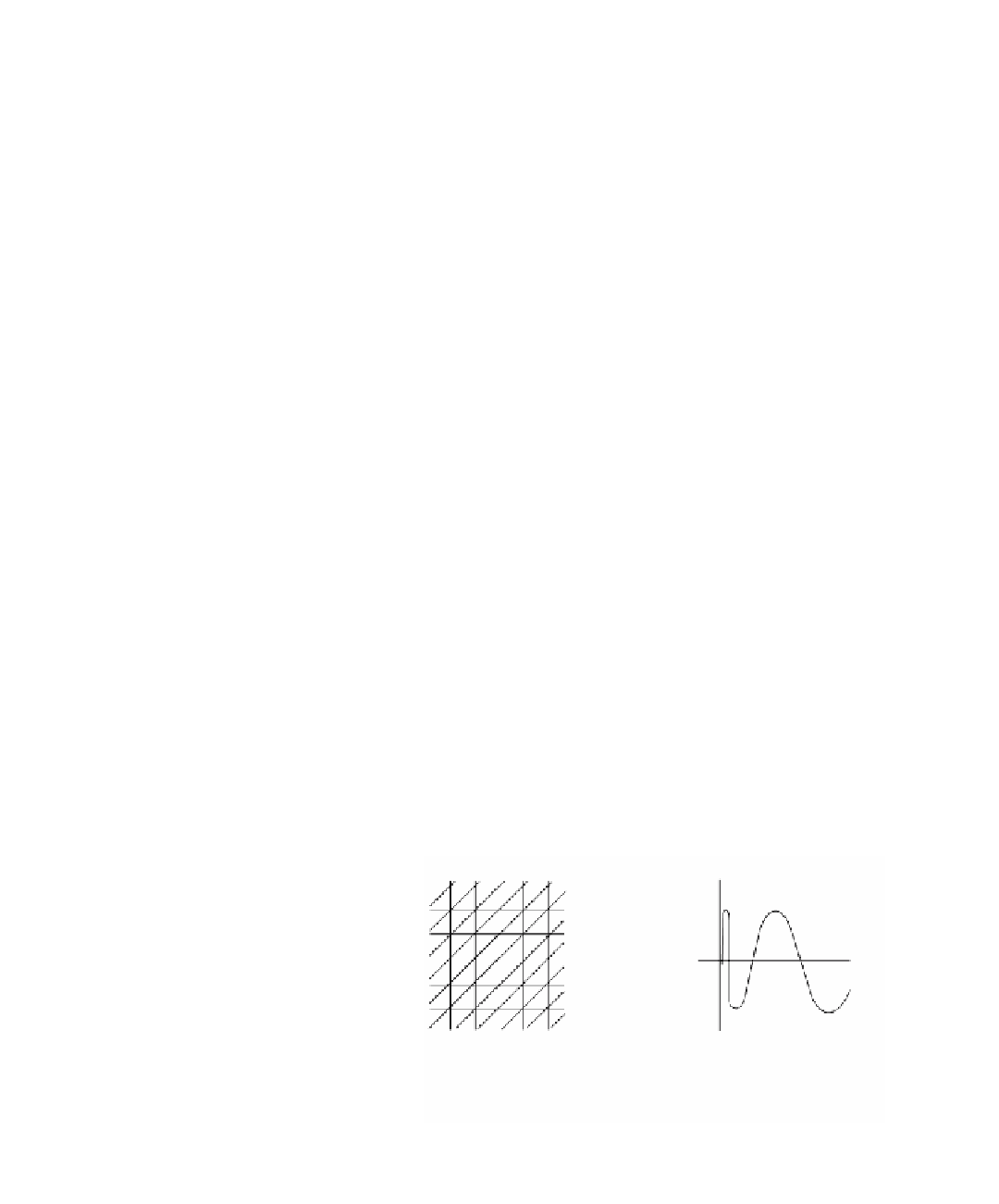Graphics Reference
In-Depth Information
Note that even simple spaces like the unit circle are not the underlying space of
a simplicial complex because a “curved” space cannot be built out of “flat” spaces like
simplices. It is easy to show, however, that the circle is a polyhedron. In fact, all the
spaces that one usually can think of are polyhedra. The only obvious exceptions have
simple explanations. For example, the plane is not a polyhedron even though it has a
nice triangulation using an “infinite” simplicial complex as shown in Figure 6.12(a).
One can easily allow a simplicial complex to have an infinite number of simplices, but
when one deals with infinity one does have to be careful. One would not want to think
of the reals as a 0-dimensional complex whose simplices are the individual points.
That would imply the wrong
topology
for the space. Here is the correct definition:
Definition.
An
infinite simplicial complex
K is a countably infinite collection of sim-
plices in
R
n
satisfying conditions (1) and (2) in the definition of a finite simplicial
complex and the following:
(3) Every point of
R
n
has a neighborhood that meets only finitely many simplices
of K.
An
infinite polyhedron
is a space that is triangulated by an infinite simplicial complex.
All spaces studied in this topic are finite or infinite polyhedra. Since we deal mostly
with finite ones we shall omit the adjective “finite” and explicitly use the adjective
“infinite” on those occasions where we need infinite simplicial complexes or polyhe-
dra. By and large, spaces that “really” are not finite polyhedra are topologically “weird”
spaces such as the one shown in Figure 6.12(b) but could nevertheless be useful like
fractals in computer graphics (described in Chapter 22 in [AgoM05]).
Sometimes we want to distinguish between “curved” and “flat” or “linear” spaces.
Definition.
The underlying space of an n-dimensional simplicial complex K is called
a
linear polyhedron
of
dimension
n.
It is easy to show that the term “convex linear polyhedron” using the new defini-
tion of linear polyhedron is compatible with the term as defined in Section 1.7.
Definition.
Let
p
1
,
p
2
,..., and
p
k
be a sequence of points in a two-dimensional
plane
X
. The set
y
y
+ 1
x
x
- 1
X = { (x,sin(1/x)) | 0 < x ≤ 2 }
»{ (0,y) | - 1 ≤ y ≤ 1}
Figure 6.12.
Spaces without
finite triangulations.
(a)
(b)

